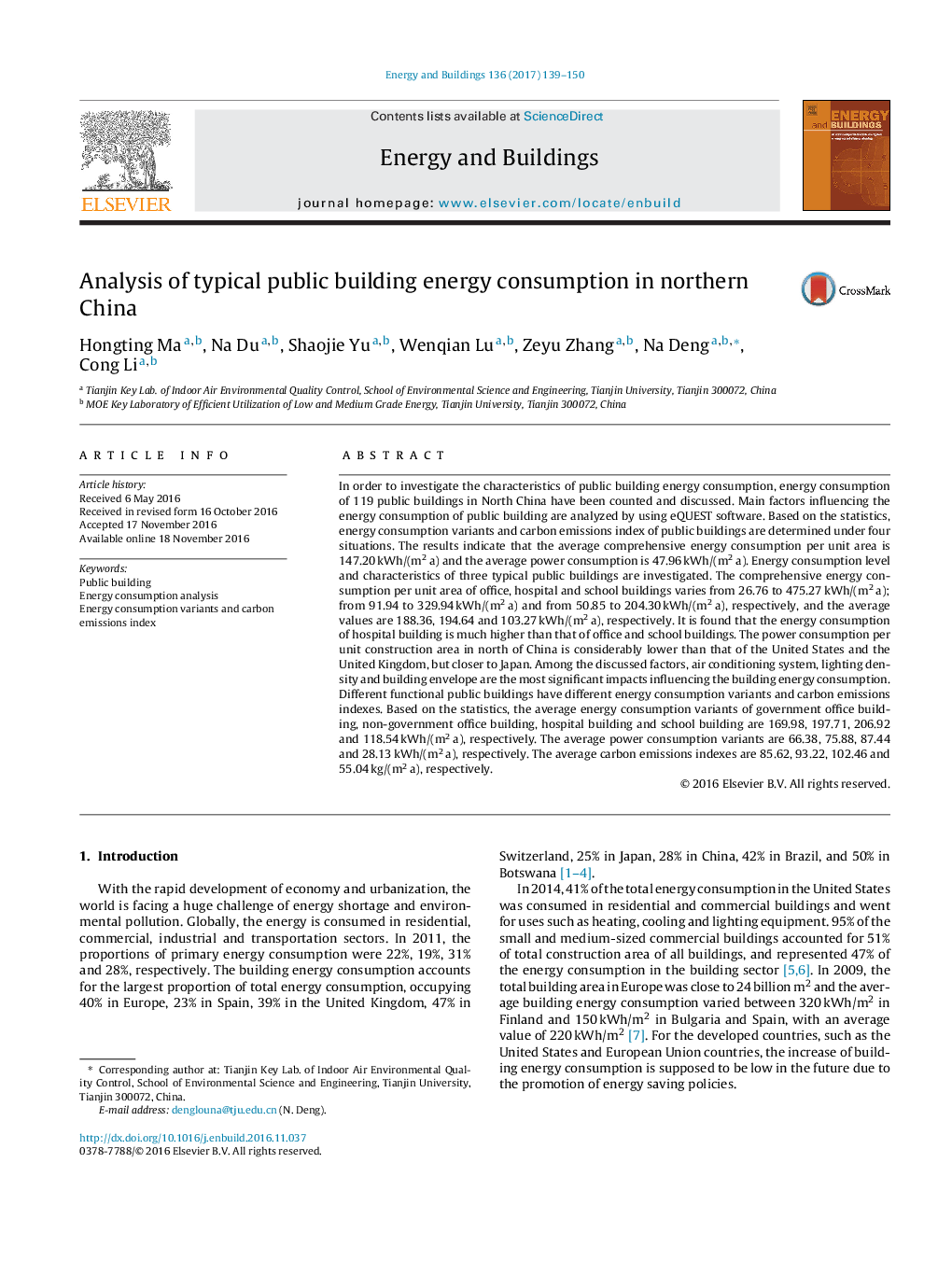| Article ID | Journal | Published Year | Pages | File Type |
|---|---|---|---|---|
| 4914234 | Energy and Buildings | 2017 | 12 Pages |
Abstract
In order to investigate the characteristics of public building energy consumption, energy consumption of 119 public buildings in North China have been counted and discussed. Main factors influencing the energy consumption of public building are analyzed by using eQUEST software. Based on the statistics, energy consumption variants and carbon emissions index of public buildings are determined under four situations. The results indicate that the average comprehensive energy consumption per unit area is 147.20Â kWh/(m2Â a) and the average power consumption is 47.96Â kWh/(m2Â a). Energy consumption level and characteristics of three typical public buildings are investigated. The comprehensive energy consumption per unit area of office, hospital and school buildings varies from 26.76 to 475.27Â kWh/(m2Â a); from 91.94 to 329.94Â kWh/(m2Â a) and from 50.85 to 204.30Â kWh/(m2Â a), respectively, and the average values are 188.36, 194.64 and 103.27Â kWh/(m2Â a), respectively. It is found that the energy consumption of hospital building is much higher than that of office and school buildings. The power consumption per unit construction area in north of China is considerably lower than that of the United States and the United Kingdom, but closer to Japan. Among the discussed factors, air conditioning system, lighting density and building envelope are the most significant impacts influencing the building energy consumption. Different functional public buildings have different energy consumption variants and carbon emissions indexes. Based on the statistics, the average energy consumption variants of government office building, non-government office building, hospital building and school building are 169.98, 197.71, 206.92 and 118.54Â kWh/(m2Â a), respectively. The average power consumption variants are 66.38, 75.88, 87.44 and 28.13Â kWh/(m2Â a), respectively. The average carbon emissions indexes are 85.62, 93.22, 102.46 and 55.04Â kg/(m2Â a), respectively.
Related Topics
Physical Sciences and Engineering
Energy
Renewable Energy, Sustainability and the Environment
Authors
Hongting Ma, Na Du, Shaojie Yu, Wenqian Lu, Zeyu Zhang, Na Deng, Cong Li,
